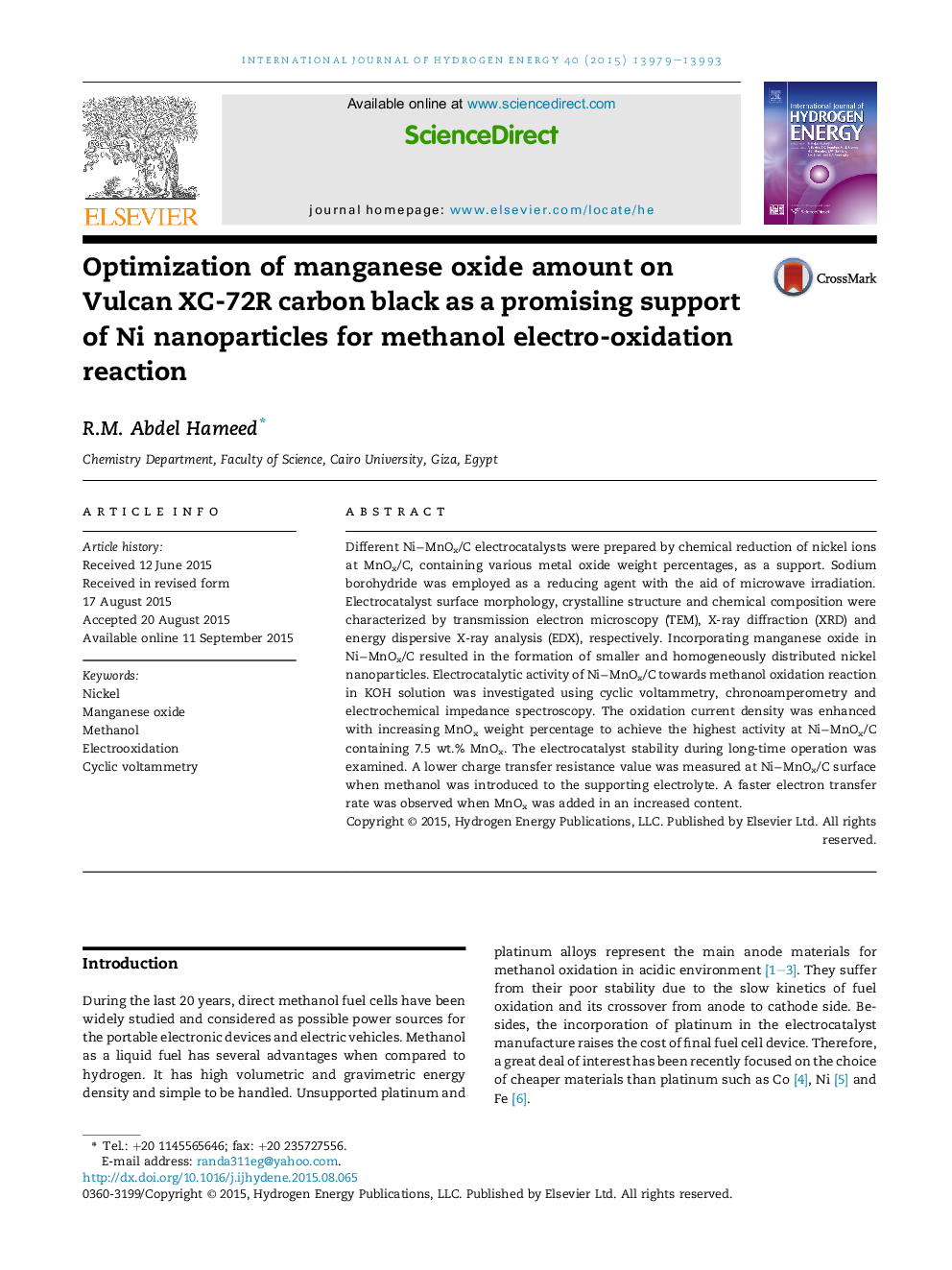| Article ID | Journal | Published Year | Pages | File Type |
|---|---|---|---|---|
| 1270456 | International Journal of Hydrogen Energy | 2015 | 15 Pages |
•Ni−MnOx/C electrocatalysts were prepared using assisted microwave irradiation.•Smaller and homogeneously distributed nickel nanoparticles were formed.•Ni−MnOx/C-7.5 showed the highest oxidation current density.•Faster electron transfer rate was gained when MnOx was added in increased content.
Different Ni−MnOx/C electrocatalysts were prepared by chemical reduction of nickel ions at MnOx/C, containing various metal oxide weight percentages, as a support. Sodium borohydride was employed as a reducing agent with the aid of microwave irradiation. Electrocatalyst surface morphology, crystalline structure and chemical composition were characterized by transmission electron microscopy (TEM), X-ray diffraction (XRD) and energy dispersive X-ray analysis (EDX), respectively. Incorporating manganese oxide in Ni−MnOx/C resulted in the formation of smaller and homogeneously distributed nickel nanoparticles. Electrocatalytic activity of Ni−MnOx/C towards methanol oxidation reaction in KOH solution was investigated using cyclic voltammetry, chronoamperometry and electrochemical impedance spectroscopy. The oxidation current density was enhanced with increasing MnOx weight percentage to achieve the highest activity at Ni−MnOx/C containing 7.5 wt.% MnOx. The electrocatalyst stability during long-time operation was examined. A lower charge transfer resistance value was measured at Ni−MnOx/C surface when methanol was introduced to the supporting electrolyte. A faster electron transfer rate was observed when MnOx was added in an increased content.
Graphical abstractFigure optionsDownload full-size imageDownload as PowerPoint slide
